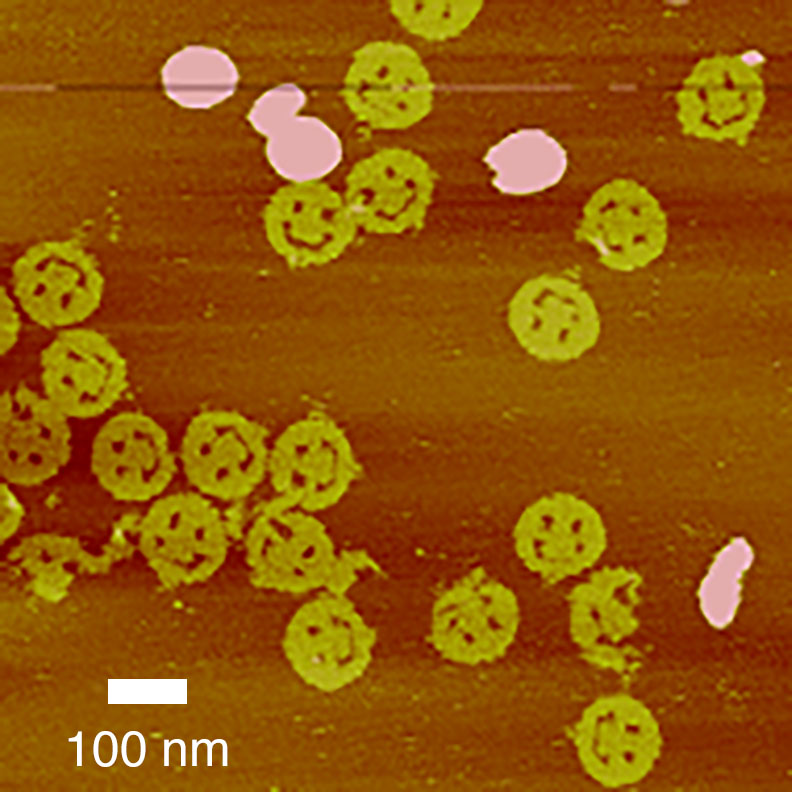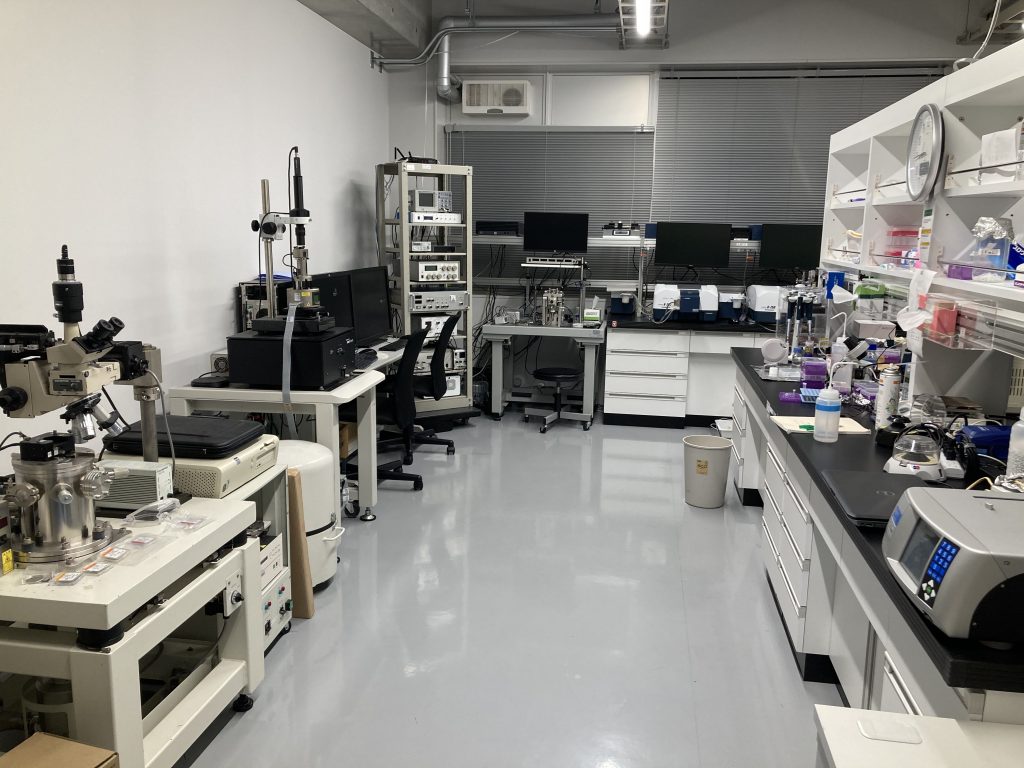Our second key technology is to control the behavior of DNA molecules as desired by programming the sequence of the four ATGC letters. For example, by combining DNA strands of different lengths and controlling the formation and dissociation of the double helix between complementary DNA strands, we can use DNA to perform logical operations. Just recently, researchers in the U.S. have built an AI that can recognize images of handwritten characters using only DNA molecules (K.M. Cherry, L. Qian, Nature 2018, 559, 370). This field is known as “DNA computing“. It is also possible to treat DNA like a log and spontaneously assemble molecular-sized rafts and log houses by utilizing branched DNA structures that do not naturally exist. This research field is called “DNA nanotechnology“. In each of these fields, all we have to do is to carefully design the sequence of DNA. Then, without directly manipulating the DNA molecule, the strands will find their counterpart and start working on its own, according to the information written on it, and perform calculations or assemble into a specific structure. The term “intelligent molecule” used in the name of our laboratory was coined in reference to this fact.

The most active research topic in the field of DNA nanotechnology today is “DNA origami method“, in which very long single-stranded DNA virus genome is folded to form a molecular fabric (P.W.K. Rothemund, Nature 2006, 440, 297). We were among the first in the world to adopt this method, and have developed a variety of useful molecular devices using DNA as a material.
In our laboratory, we currently maintain a total of three “atomic force microscopes (AFM)” that allow us to directly observe the “shape” of molecules. High-speed AFM is capable of monitoring molecules in real-time.

→Creating DDS carriers
→Creating diagnostic agents
→Producing artificial antibodies
We have also succeeded in creating more complex “molecular systems” by utilizing DNA computing and DNA nanotechnology to program and control biomolecules other than DNA (→Using DNA).
→Creating molecular robots
→Creating artificial muscles
→Go to “Exploiting DNA“
→Back to “Research Topics“